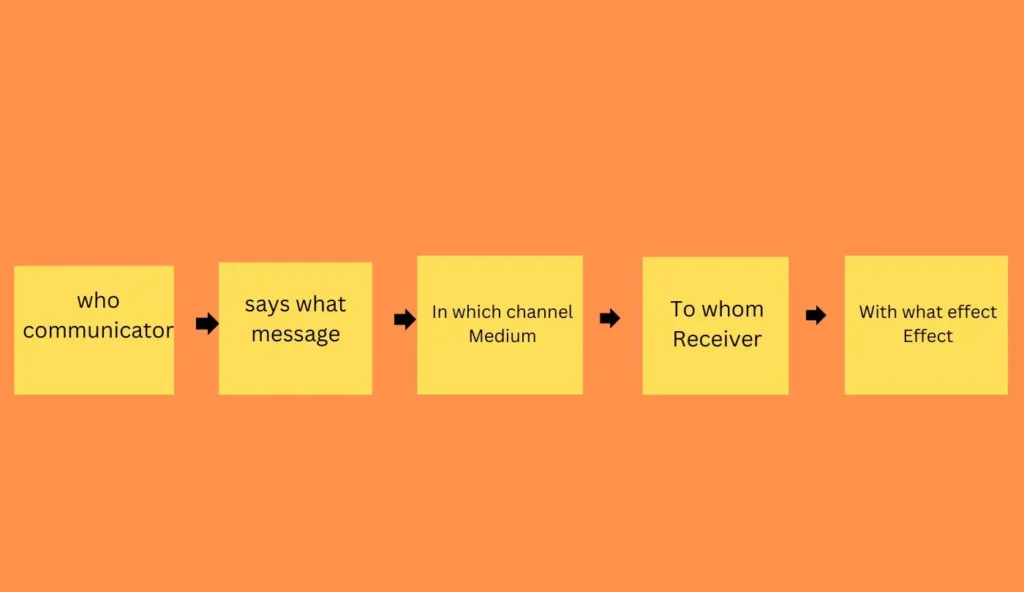Lasswell and Aristotle’s law of communication These are the two prominent figures in the field of communication theory They both contributed significantly to our understanding of the communication process.
Aristotle was an ancient Greek philosopher and scientist who is still considered one of the greatest thinkers in history he was born in 384 BC and died in 322 BC. He studied under Platonic Academy at the academy in Athens for about 20 years Later, he founded his own school (Peripatetic school) where he taught and wrote on a wide range of subjects, including logic, metaphysics, ethics, politics, biology, physics, poetry.
He is also regarded as the father, the father of logic. When he was exploring human nature he focused on a linear model of communication which was later named Aristotle’s model of communication.
Lasswell Was an American political scientist and communication theorist. He was born on Feb 30, 1902, and died on December 18, 1978. He was a professor of law at Yale University. He served as president of the American Political Science Association(ASPA) the American Society of International Law and the World Academy of Art and Science(WAAS). He did his education at the University of Chicago (PhD). Lasswell is well known for his model of communication.
Lasswell and Aristotle’s Law of Communication
Aristotle’s law of communication
According to Aristotle Modern communication speaker(subject) is the main figure in communication. In this model of communication, it is important that the speaker(subject) select his words carefully. Aristotle’s model of communication is the first model of communication and is considered the most simple and straightforward.
It is borrowedly divided into five primary elements speaker, speech, occasion, audience, and effect. There is a total communication model is revolves around the speaker. Because it is the main component of this theory.
In this law of communication speaker’s(sender) role is to deliver his message to the audience, but the audience is passive. This law of communication makes the communication process one-way from the speaker(sender) to the receiver.
In this model speaker is the main figure in communication, it is very important that the speaker select his/her words very carefully. He/she must analyze their audience and prepare his/her speech accordingly. At the same time, he/she should assume the right body language because perfect body language helps you to look confident.
For example:
If you giving an interview you are very confident about but interview but your body language is not correct, The interviewer thinks you are not confident or prepared for the interview.
Proper eye contact is also very important in communication.
For example:
Imagine you are a reporter and you are covering news, but you are not facing the camera or if you asking the public to the public but your eye contact is not with the camera and audience, so they think you are not confident or not interested.
Lasswell’s law of communication
Lasswell’s law of communication is the most influential model of communication. He analyzed the communication in five basic questions: who? says what? in which channel? to whom? and with what effect?. some theorists also criticize the Laswell law of communication.
In the beginning conceived for the analysis of mass communication like radio, television, and newspaper. Lasswell’s model is still being used today and has influenced many subsequent communication theorists.
Laswell model model is criticized for not taking the effects of noise into account. However, not everyone agreed with these objections. Lasswell’s model was published in 1948, by Harold Laswell in his book ”The Structure and Function of Communication in Society”.

Lasswell, 3 functions for communication:
Surveillance of the environment:
It refers to the gathering of information from one’s surrounding environment. For example, people see the news and make their own perspectives about the world.
correlation of components of society:
it refers to analyzing and interpreting the information that we receive while weighing its pros and cons it becomes on the basis of public opinion.
cultural transmission between generations:
it refers to spreading information. Media also play an important role for educators, as it provides information to the public that shapes public opinions, attitudes, and decisions.
Advantages of the Laswell model:
- It is easy and simple.
- It is almost for all types of communication.
- Leswell’s model has the concept of effect.
Disadvantages of the Laswell model :
- In this model, feedback is not mentioned.
- In the Laswell model, noise is not mentioned.
- It is a linear model.
Conclusion
In conclusion, both Lasswell and Aristotle’s Law of Communication have made equal contributions to the field of communication theory with their models. Aristotle’s model describes the importance of the speaker in communication and it focuses on the message made by the speaker. On the other hand, Laswell’s model focuses on the five key questions” Say what? In which channel? with whom? And with what effect?”.
Overall, these models provide valuable information about different aspects of communication It helps us understand how messages are complete and received. Till now they are relevant in the study of communication. For more information stay connected with me.